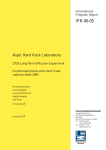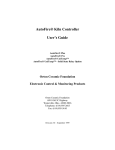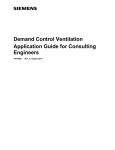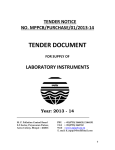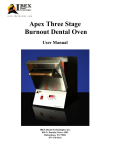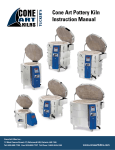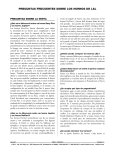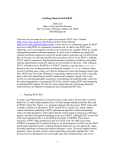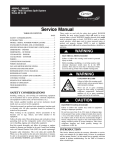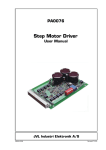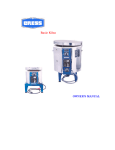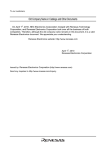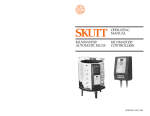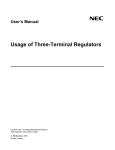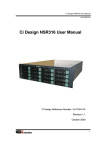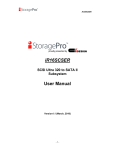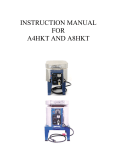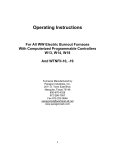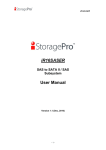Download AF3000 user manual - Edward Orton Ceramic Foundation
Transcript
3000 Kiln Controller USER'S GUIDE The Edward Orton Jr. Ceramic Foundation AutoFire® Kiln Controller User’s Guide AutoFire3000 Controller Orton Ceramic Foundation Orton Ceramic Foundation 6991 Old 3C Highway Westerville, Ohio 43082-9026 Telephone: (614) 895-2663 Fax: (614) 895-5610 www.ortonceramic.com November 2008 AutoFire3000 ® Kiln Controller TABLE OF CONTENTS INTRODUCTION ........................................................................................................................................................................ 3 PRECAUTIONS ........................................................................................................................................................................... 3 FEATURES .................................................................................................................................................................................. 3 TEST FIRING WITH WITNESS CONES ................................................................................................................................ 5 CONE-FIRE – HOW IT WORKS .............................................................................................................................................. 5 KEYPAD OVERVIEW ............................................................................................................................................................... 6 DISPLAY LIGHTS.......................................................................................................................................................................... 7 STARTING A FIRING ..................................................................................................................................................................... 7 ENDING A FIRING ........................................................................................................................................................................ 7 ENTERING VALUES ...................................................................................................................................................................... 7 THRESHOLD ALARM.................................................................................................................................................................... 8 PROGRAM REVIEW ...................................................................................................................................................................... 8 POWER CONSUMPTION ................................................................................................................................................................ 8 DELAY START ............................................................................................................................................................................. 8 STATUS ....................................................................................................................................................................................... 8 BACK .......................................................................................................................................................................................... 8 PROGRAMMING FOR CONE-FIRE ....................................................................................................................................... 9 CONE TABLE ............................................................................................................................................................................... 9 CONE FIRE EXAMPLE ................................................................................................................................................................ 10 USER PROGRAMS ................................................................................................................................................................... 11 TEMPERATURE UNITS ............................................................................................................................................................... 11 USER PROGRAM HEATING/COOLING RATES .............................................................................................................................. 11 MAXIMUM RAMP RATE FOR USER PROGRAMS.......................................................................................................................... 12 USER PROGRAM TARGET TEMPERATURES ................................................................................................................................ 12 USER PROGRAM COOLING RAMPS............................................................................................................................................. 12 CHANGING A TARGET TEMPERATURE DURING A FIRING ........................................................................................................... 12 USER PROGRAM HOLD TIME ..................................................................................................................................................... 12 SET-POINT HOLD ...................................................................................................................................................................... 13 ADDING TIME TO A HOLD.......................................................................................................................................................... 13 SHORTENING A HOLD ................................................................................................................................................................ 13 USER PROGRAM VENT FAN (OPTIONAL) ................................................................................................................................... 13 PROGRAMMING USER PROGRAMS ............................................................................................................................................. 14 SELECTING A STORED USER PROGRAM ..................................................................................................................................... 14 USER PROGRAM EXAMPLE ........................................................................................................................................................ 15 ALARMS .................................................................................................................................................................................... 16 THERMOCOUPLE ALARMS ......................................................................................................................................................... 16 DEVIATION ALARMS ................................................................................................................................................................. 17 POWER INTERRUPTION ALARMS ............................................................................................................................................... 17 DIAGNOSTIC ALARM ................................................................................................................................................................. 17 OPTIONS MENU....................................................................................................................................................................... 17 FIRING SPEED - SPD .................................................................................................................................................................. 18 CONE OFFSET - OFST ............................................................................................................................................................... 19 THERMOCOUPLE OFFSET - TCOS.............................................................................................................................................. 19 VENT FAN - FAN ...................................................................................................................................................................... 19 TEMPERATURE DIFFERENCE - DIFF........................................................................................................................................... 19 CHANGE TEMPERATURE UNITS – CHG-.................................................................................................................................... 20 THERMOCOUPLE TYPE - TC ...................................................................................................................................................... 20 AUXILIARY OUTPUT - AOP ....................................................................................................................................................... 20 1 AutoFire3000 ® Kiln Controller RAMP RATE UNITS - RATE ....................................................................................................................................................... 20 ELECTRICITY COST - COST ...................................................................................................................................................... 20 KILOWATT RATING - KW........................................................................................................................................................... 20 IDENTIFICATION NUMBER - ID ................................................................................................................................................... 20 TEMPERATURE DEVIATION - TEDE ........................................................................................................................................... 21 TOP/BOTTOM BALANCE - BAL.................................................................................................................................................. 21 CENTER ZONE ADJUSTMENT - CADJ ......................................................................................................................................... 21 SAFETY TEMPERATURE - SFTY ................................................................................................................................................ 21 THERMOCOUPLE TEMPERATURES – T123 ................................................................................................................................. 21 ELECTRONICS TEMPERATURE - ELEC ...................................................................................................................................... 21 PROGRAM LOCK MODE - LOCK ............................................................................................................................................... 21 CONFIGURATION NUMBER - CFG .............................................................................................................................................. 22 SOFTWARE VERSION - SOFT..................................................................................................................................................... 22 TEST INPUTS AND OUTPUTS - TEST .......................................................................................................................................... 22 RESET - RST ............................................................................................................................................................................. 22 MULTI-ZONE CONTROL ....................................................................................................................................................... 22 REFERENCE SECTION .......................................................................................................................................................... 23 APPENDIX A – LOW FIRE CONE PROGRAMS .............................................................................................................................. 23 APPENDIX B – MID FIRE CONE PROGRAMS ............................................................................................................................... 24 APPENDIX C – HIGH FIRE CONE PROGRAMS ............................................................................................................................. 25 APPENDIX D – USER PROGRAM CHARTS ................................................................................................................................... 26 APPENDIX E – CONNECTING THERMOCOUPLES ......................................................................................................................... 27 APPENDIX F – TYPICAL WIRING DIAGRAM ............................................................................................................................... 28 2 AutoFire3000 ® Kiln Controller Introduction This User‟s Guide explains the features and operation of the Model AutoFire®3000 Controller. The controller has 12 keys for programming. Orton controllers use P-I-D control algorithms to tightly control kiln temperature. This eliminates temperature cycling. Cycling occurs when the controller turns the kiln on or off in a way where the actual temperature does not closely follow the desired firing schedule. Orton controllers store all of the program information in memory when turned off. If power is lost during a firing, the controller remembers how far the firing has progressed and determines if it can resume the firing when power is restored. Controller Models There are two basic controller models: Single Zone – These use a single thermocouple to control the kiln temperature Multi Zone – These use 2 or 3 thermocouples to separately control sections of a kiln Precautions The controller is not a safety device. The controller operates relays to turn the kiln elements on and off. It is possible for relays to fail in the „on‟ position. The controller cannot protect against relay failure. To prevent over firing, never leave the kiln unattended, especially at the end of a firing. Controller accuracy and performance depends on the condition and position of the thermocouples in use. Getting Started Read all precautions and instructions before using your controller. If your kiln has manual control switches for the heating elements, turn all the dials to the highest settings. If you have a Kiln-Sitter on your kiln, you can use a Cone 10 bar under the sensing rod to shut off power if the kiln reaches high temperatures. This bar will last many firings and can act as a backup safety device for the firing. Features The AutoFire®3000 includes many standard features, a user-friendly keypad and robust temperature control software. 3 AutoFire3000 ® Kiln Controller Firing Methods and Features Cone-Fire method: Select a preset program for a specific cone number from Cone 022 to Cone 12. These programs are designed specifically for ceramic firings. User Program method: Create 9 custom firing schedules with unique heating and cooling rates, target temperatures and hold times. This method can be used for ceramics, heat treating, glass fusing, enameling or jewelry applications. Preheat - Use with Cone-Fire mode to slowly dry ware and hold the kiln at 200F (93C) to remove moisture. Speed adjustments - Use with Cone-fire mode to speed up or slow down a firing in order to adjust for load size or thick pieces of ware. Delay start - Use with either mode to delay start the kiln up to 100 hours (99hr.59min.) Set-Point Control - User Program option to hold kiln at temperature indefinitely. Full On / Full Off - User Program option to heat kiln as fast as possible or to cool as fast as possible. Add Time – Add additional hold time to firings already in progress. Back – Correct or make changes while programming without having to start over. Program edit – User Program option to change target temperatures and hold times during the firing without having to stop and restart the controller. Advanced Options Cone Offset - Use with Cone-Fire to adjust the firing temperature of the kiln by 11C (20F) to fine tune the controller to your kilns performance. Skip - Skip from a current ramp or hold segment to the next ramp segment Alarm - Program an alarm to sound when a specific temperature is reached. Thermocouple Offset - Adjust display temperature by as much as ±25C (45F) to offset aging thermocouple(s). Auxiliary Output - Control a relay to switch on a vent fan or external alarm Power Consumption – Review the calculated cost or Kilowatt usage of the kiln firing. Display Messages and Information 4 Cone Table - Look up table for cone number temperatures Program Review - Review the current firing program before or during a firing. Status - Display the current status and actual heating/cooling rates of the firing. Temperature Units - Display Temperature in Fahrenheit (F) or Centigrade (C) Units Computer Interface – Monitor/Analyze kiln data from a PC using AutofireDLS datalog software. AutoFire3000 ® Kiln Controller Test Firing with Witness Cones A test firing will help in learning the operation and features of the controller. Follow your kiln manufacturer's instructions for setting up your kiln. Place a set of Orton Self-Supporting Cones on the middle shelf of your kiln so that they can be seen through a kiln peephole. Use a series of cones close to the final firing temperature (see Appendix C). For example, if firing to 1945F (Cone 04), use a Cone 03, Cone 04, and Cone 05 for the test firing. To evaluate heat distribution, place a set of cones on each shelf during the test firing. Most kilns fire more uniformly at Cone 06 than they do below Cone 06. Provide ventilation for the kiln in accordance with the kiln manual or KilnVent® instruction manual. After the firing, examine the fired cones. Some variation in the bending of the cones may occur, depending on how the kiln was loaded and the location of the cones. Cone-Fire – How it works When firing to a cone number, the controller constantly monitors the actual heating rate of the kiln. If the kiln does not fire as rapidly as programmed, the controller re-calculates and adjusts the top firing temperature to compensate for the slower firing rate. This process more accurately fires to the cone number selected. When the heating rate slows, cones deform at slightly lower temperatures. At faster heating rates, cones deform at slightly higher temperatures. This ability to recalculate and to fire to a cone value is a unique, patented feature of all Orton controllers. Orton Controllers contain three preset programs for firing to a cone number – Low Fire, Mid Fire, and High Fire. Each of these programs can be adjusted to a cone temperature within the firing range. These programs are designed to fire normal loads of thin ware ceramics. When a kiln is more heavily loaded or when thick ware is fired, additional firing time is needed. Experiment to determine the best firing conditions. The preset firing programs in the controller are: Program Low Fire Mid Fire High Fire Product Fired Decal, Luster, China Glaze, Bisque, Earthenware Stoneware, Porcelain 100 TIME 200 HI FIRE PROGRAM TEMPERATURE TEMPE RATURE TEMPE RATURE 0 Firing Time 3 - 5 hours 6 - 8 hours 9 - 11 hours MID FIRE PROGRAM LO FIRE PROGRAM 5 Cone Range Cones 022 – 011 Cones 010 - 01 Cones 1 – 12 0 200 TIME 400 0 200 400 TIME 600 AutoFire3000 ® Kiln Controller Keypad Overview Numerical values for cone numbers, hold times, target temperatures and heating rates can be programmed by using the numerical keypad. Most keys have multiple functions for special features as described below. Use to select a Cone Fire program Acts as a scroll Down button to change Option settings Use to select Fast speed during Cone-fire programming Use to increase hold time for active firings Acts as a scroll Up button to change Option settings Use to select Standard speed during Cone-fire programming Use to program a delay start time Use to select Slow speed during Cone-fire programming Use to select one of the 4 customized User Programs Use to edit a User Program in progress Use to display current program segment during a firing Use to review the actual heating or cooling rate during a ramp segment Use to review the entire program before or during a firing Use to set a temperature for the alarm to sound Use to review the Kilowatt power consumption or cost of the kiln firing. Use to Skip to next ramp during a firing Use to look up cone temperatures before a firing Use during programming to enter values Use to Start the firing Use to access advanced controller options Use to back up during programming Use to Stop a firing or exit the options menu 6 AutoFire3000 ® Kiln Controller Display Lights The controller uses (4) numerical displays and 3 indicator lights. The 3 lights tell when the controller is turning on the relays to power the heating elements. For a single zone controller, all 3 lights turn on and off together unless the Balance option has been adjusted. For multi zone controllers, each light is independent. The top light represents the top zone, the middle light represents the middle zone and the bottom light represents the bottom zone. Two of the four decimal points on the display are also used as indicators. The decimal point on the far right is used to indicate if the controller is displaying temperature in degrees Fahrenheit (F) or Centigrade (C). If this decimal point is lit, the controller is set to display temperatures in C. The center decimal point (between the second and third digit) lights whenever the display is showing a time value. The decimal point separates Hours (on the left) from Minutes (on the right). When the Controller is first turned on The controller runs a brief self-diagnostic test. The display will light up and the audible alarm sounds temporarily. In 5 seconds or less, the display will alternate between the kiln temperature and IdLE. IdLE is the mode where the controller is not actively firing the kiln or being programmed for a firing. Starting a Firing The display shows STRT for 5 seconds when the firing begins. STRT is the „Start‟ message. The display will show kiln temperature throughout the firing. The temperature display will alternate with alarm messages if any alarms occur. If the controller is programmed to hold at a specific temperature, the remaining Hold Time will alternate with the temperature as well. Ending a Firing When the controller completes the firing, the display alternates 4 messages: CPLT (Firing Complete); Firing Time (hrs.mins); Final Firing Temperature and Current Kiln Temperature. Press any key to return to IdLE. If you stop the firing before completion with the Stop key, the display will indicate AbRT (abort) in place of CPLT. Press Stop again to return to IdLE Entering values Whenever a change is made from the keypad, you must press the Enter/Start key to load the changes. If the key is not pressed, the controller will simply wait for your next selection. Pressing the Enter/Start key will advance you to the next option if you are setting up a program or changing settings. Note: If you are programming the controller and no keys are pressed for 1 minute, the controller will return to the IdLE mode. 7 AutoFire3000 ® Kiln Controller Threshold Alarm To sound an audible alarm when the controller reaches a temperature, press the #7/Alarm key. ALAR shows in the display alternating with the alarm temperature. You can use the numerical keypad to enter a new alarm temperature or press Enter to keep the existing value. Setting the value to zero disables the alarm feature. When the kiln reaches the alarm temperature, the display will indicate ALAR and the buzzer will sound. Silence the alarm by pressing any key except Stop. Pressing Stop ends the firing. Use the alarm function in Cone-fire mode or User Program mode. You can program the Alarm before you start the firing or during the firing. Program Review To review the current program in the controller memory before or during a firing, press the #6/ProgReview key. The entire program will automatically scroll through the display and then return to normal operation. Delay time and Preheat time are included in the review. Power Consumption To review the current power consumption during or after the kiln firing, press the #8/Cost key. The display will show the calculated electric usage for the firing if the option KW is programmed with a known wattage rating for the kiln. In addition, the display will show a calculated firing cost if the COST option is programmed with a known price for KWHR usage. Note: These calculations are estimates and are dependent on the accuracy of the values set by the operator. Delay Start To program the controller to begin a firing at a later time, press the #3/Delay key. dELA shows in the display. Using the numeric keypad, enter a time delay in Hours.Minutes format and press Enter. Delay must be programmed before the firing is started. Once the firing is started, the remaining delay time will count down on the display. Note: you can bypass the Delay time once the delay period has started by pressing the Enter key. Status To review the current status of the controller during a firing, press the #5/Status key. The current ramp segment is displayed. If the current status is a heating or cooling ramp, the display will also show the actual ramping rate. (See the RATE option for more information on how the actual ramp rate display can be modified) The controller returns to normal operation after 5 seconds. Back To back-up during programming press the Back/Stop key. This will return you to the previous entry. The „Back‟ feature can be used anytime during programming to make corrections. This prevents the need to start over when programming a User Program or Cone-fire program. Repeating a firing To Repeat a firing without making changes to the program, simply press Start when the controller is displaying IdLE. Use the Program Review feature to verify that the program you want is loaded into memory. 8 AutoFire3000 ® Kiln Controller Programming for Cone-Fire During programming, default values may appear in the display. If the controller was previously programmed, the last settings will appear. 1. Press The #1/ConeFire key. CONE shows in display alternating with the last Cone selection value. 2. Using the numeric keypad, select the desired Cone number. For Example: you would press the #0 key and the #6 key for a Cone 06 firing. Then press Enter. 3. SPd shows in the display indicating the Speed setting - Press the #1 key to select „Fast‟, #2 key to select „Standard‟ or the #3 key to select „Slow‟. Then press Enter. 4. PRHT shows in the display indicating the optional preheat time. Preheat will heat the kiln at the rate of 60ºF(33ºC)/hr up to 200F(93ºC), PRHT will be alternating with a Time value. Using the numeric keypad, enter a time for the kiln to hold at 200ºF. Time is entered in (Hours.Minutes). If no preheat is needed, program zero hours and zero minutes (00.00). Then press Enter. After the kiln firing has started and the Preheat temperature is reached, the Cone Fire program will begin automatically once the Preheat hold time has expired. You can Skip out of the Preheat ramp or hold period at any time by pressing the #9/Skip key and Enter. 5. HOLd shows in the display indicating the optional Hold time at the end of the firing, HOLd will be alternating with a Time value. Using the numeric keypad, select a time for the kiln to hold at the top cone temperature. Enter time as (Hours.Minutes). If no Hold is needed, program zero hours and zero minutes (00.00). Then press Enter. 6. COOL shows in the display indicating the optional Cooling ramp at the end of the firing, COOL will be alternating with a rate value. Using the numeric keypad, Enter a cooling rate for the kiln to cool to 392ºF(200ºC). The maximum cooling rate is limited to 180ºF(100ºC)/hour. If no controlled cooling is needed, program the rate value as zero. Then press Enter. The controller will return to IdLE. The programmed firing schedule is automatically stored and ready to begin the firing. To verify the program, you can press the #6/Review key at any time. 7. If no advanced features are desired - Press Enter/Start to begin the firing Cone Table This feature displays the firing temperature for a Cone number. Press #9/ConeTable while the controller is Idle or during a Cone firing. Using the numeric keypad, enter a Cone number and press Enter to display the target temperature for self-supporting cones fired at the rate of 108F (60C) per hour during the final 200C of the firing. Cone Fire Advanced Options There are two Advanced Options available for Cone Fire programs only. These are Cone Offset and the Speed adjustment. For information on these options, see the Options Section. 9 AutoFire3000 ® Kiln Controller Cone Fire Example To fire to Cone 06, Fast firing speed (20% faster), 30 minute Preheat hold, 15 minute hold at cone temperature, No controlled cooling Follow these steps: starting with the controller displaying IdLE Press Display Shows …………………………………………. CONE ..……..………………………. 06 ………………………………………… SPd ………………………………………… FAST ………………………………………… PRHT ….…………………………… 00.30 ………………………………………… HOLd ….……………………………. 00.15 ………………………………………… COOL ………………………………………… 00.00 ………………………………………… IdLE ……………………………………….... STRT To stop the kiln anytime during the firing, press Stop. The controller display will indicate ABRT (Abort). Press Stop again to return to IdLE 10 AutoFire3000 ® Kiln Controller User Programs Nine User Programs are available. The User Program mode allows you to customize your firing schedule and specify how fast the kiln heats or cools to any temperature. User Program #1 allows 20 ramps. User Programs # 2 9 each have 10 ramps. Each ramp consists of a heating rate, a target temperature and a hold time. Press the #4/UserProg key to begin programming. The message USER appears in the display. Use the numeric keypad to select which program you wish to create or modify. You must select 1 - 9. Then press Enter. Temperature Units If your controller is configured to display temperature values in F, heating rates will be programmed as Degrees Fahrenheit per hour and target temperatures will be programmed as Degrees Fahrenheit. If your controller is configured to display temperature values in C, heating rates will be programmed as Degrees Centigrade per hour and target temperatures will be programmed as Degrees Centigrade. To change the temperature units, see the CHG- option. User Program Heating/Cooling Rates Rate is the speed of the firing. Rate is programmed as Degrees per Hour if the RATE option is set to HOUR. Some calculations may be required to determine your desired heating rate. Example; if you know that you want to heat the kiln from room temperature (75F) to 212F over a 2 hour period, First determine the amount of temperature rise: 212 - 75 = 137 degrees Then divide the amount of temperature rise (or drop) by the number of hours you would like it to take to get there. 137 2 = 68.5 degrees per hour Round the calculated rate to the nearest whole number and your heating rate would be 69 degrees/hour. If you prefer to program heating and cooling rates in ‘degrees per minute’, adjust the RATE option in the options menu to MIN. If you prefer to program heating and cooling rates in ‘Hours and Minutes’, adjust the RATE option in the option menu to TIME. RA is the controller display for rate. Each ramp rate will have its own number. The rate for the first ramp will be displayed as RA 1, the rate for the second ramp as RA 2 and so on. 11 AutoFire3000 ® Kiln Controller Maximum Ramp Rate for User Programs When the Ramp Rate is set to 9999 degrees per hour or 99.99 degrees per minute or 00.00 Time, the controller will interpret this as full power for a heating ramp. This will allow the kiln to heat as fast as possible to the target temperature without rate control. If the ramp is a cooling, the controller will interpret the same values as no power and allow the kiln to cool as fast as possible without rate control. a Program Review will show the message FULL to indicate the uncontrolled rate. Deviation alarms will not be active during the heating/cooling ramp. Caution: Overshoot in temperature may occur when a kiln is heating at full power, especially at lower temperatures. User Program Target Temperatures Each ramp requires you to program the desired target temperature. F or C is the controller display for target temperature. Like rate, each temperature will have its own number. The temperature for the first ramp will be displayed as F 1 or C 1, the temperature for the second ramp as F 2 or C 2 and so on. Caution: Do not program target temperatures that exceed the temperature rating for your kiln. The maximum programmable value for target temperatures can be viewed in the SFTY option. User Program Cooling Ramps Cooling ramps are programmed the same as heating ramps. You must program the Rate for the cooling and the target temperature. The criteria for a cooling ramp is the target temperature must be lower than the preceding target temperature. If you program a target temperature at the end of the firing that is below your room temperature, the controller will never be able to complete the firing. This will result in a FTL alarm. To avoid this alarm, manually stop the firing by pressing the Stop key or program a higher end temperature. Changing a Target Temperature During a Firing If the kiln is firing and you need to modify the current ramp target temperature (or hold time), Press the #4/UserProg key. The controller will display the current target temperature and setting. Use the numeric keypad to change the temperature value and press Enter. The controller will next display the current ramp hold time and setting. This too can be modified if necessary. Press Enter again to exit the editing mode. User Program Hold Time Hold time refers to the amount of time you want the kiln to remain at the target temperature. Hold Time is often referred to as Soak or Dwell Time. Each ramp allows the option of programming a hold time. Hold time is programmed in Hours and Minutes. The decimal point light in the center of the controller display separates hours from minutes. The two digits to the left of the decimal point indicate hours while the right side indicates minutes. Example; or A 1 hour hold time should be programmed as 01.00 A 30 minute hold time would be 00.30 During a Hold time, the controller will count-down the remaining time of the Hold on the display. 12 AutoFire3000 ® Kiln Controller Hd is the controller display for hold time. Each Hold will have its own number. The hold time for the first ramp will be displayed as Hd 1, the hold time for the second ramp as Hd 2 and so on. Set-Point Hold You can program the controller to hold at a temperature indefinitely by programming a Hold Time of 99.59. The controller will hold the kiln temperature until the Stop key is pressed. Adding Time to a Hold If the kiln is firing and you need to add time to the current ramp hold time, press the #2/AddTime key. 5 minutes will be added to the hold time each time the key is pressed. If the firing is in the first ramp, you can only edit the first ramp hold time. To edit the second ramp hold time, wait until the firing has progressed into the second ramp. Shortening a Hold To end a hold before the time has expired, use the Skip Step function to advance to the next ramp. Press the #9/Skip key to view the next ramp and press Enter. User Program Vent Fan (Optional) If your controller has been configured to control an auxiliary vent fan, each ramp will allow the fan to be turned on or off during the specified ramp. Refer to the Options section for additional details on the Auxiliary Output and Fan options. FN is the controller display for vent fan. Each ramp will have its own fan setting. The fan setting for the first ramp will be displayed as FN 1, the fan setting for the second ramp as FN 2 and so on. To set the fan to On, press #1/Conefire or to set the fan to OFF press #2/AddTime key. 13 AutoFire3000 ® Kiln Controller Programming User Programs During programming, default values may appear in the display. If the controller was previously programmed, the last settings will appear. 1. Press the #4/UserProg key. USER shows in display. 2. Using the numeric keypad, select the desired user program number; 1, 2, 3 or 4. For Example: you would press the #1 key to enter a program or to modify the existing program stored in the User Program #1 location. Then press Enter 3. RA 1 shows in the display indicating the rate value for the first ramp. Use the numeric keypad to enter the desired heating rate. Then press Enter 4. F 1 or C 1 shows in the display indicating the target temperature for the first ramp. Use the numeric keypad to enter the desired temperature. Then press Enter 5. Hd 1 shows in the display indicating the Hold time for the first ramp. Use the numeric keypad to enter the desired time for the kiln to hold at the first target temperature. Time is entered as (Hours.Minutes). Then press Enter 6. FN 1 shows in the display (if available). Use the #1 or #2 key to select a fan setting; either OFF or ON for the first ramp. Then press Enter. The Fan option will not appear unless the auxiliary output option for the controller has been configured. 7. Repeat steps 3 through 6 to program additional ramp rates, temperatures and hold times. After you have programmed your final ramp, the controller should be displaying the next available RA number. If the value for the next available ramp rate is set to zero degrees per Hour or Minute, press Enter. The controller will automatically exit the programming mode. For Time mode, the value should be set to 99.99. Note: If the user program that you are working with was previously programmed, the values that have been stored in memory will appear for all the ramp settings. Whenever you enter a zero value for a rate (RA #), all settings beyond that point will be erased. This feature can be used to erase an entire user program by entering a zero rate at RA 1. 8. When the controller has returned to IdLE, press Enter/Start to start the firing. Selecting a Stored User Program To select a stored User Program without making any changes to the ramps. 1. Press #4/UserProg key. USER will show in display. 2. Using the numeric keypad, select the desired User Program number; 1 - 9. 3. Press the Back/Stop key to exit programming mode. 4. When the controller has returned to IdLE, press Enter/Start to start the firing. 14 AutoFire3000 ® Kiln Controller User Program Example Use program #1 To fire to 1830ºF at 300ºF/hour 15-minute hold at temperature Cool down to 200ºF at 500ºF/hour Shut off. Follow these steps: starting with the controller at IdLE Press Display Shows ………………………………………………….. USER ………………………………………………….. 1 ………………………………………………….. RA 1 ………………………… 300 ………………………………………………….. F 1 …………. 1830 ………………………………………………….. Hd 1 …………………………………….. 00.15 ………………………………………………….. RA 2 …………………………..….. 500 15 AutoFire3000 ® Kiln Controller Press Display Shows ………………………………………………….. F 2 ……………………….. 200 ………………………………………………….. Hd 2 ………………………………………………….. 00.00 ………………………………………………….. RA 3 ………………………………………………….. IdLE ………………………………………………….. STRT To stop the kiln anytime during the firing, press Stop. The controller display will indicate AbRT (Abort). Press Stop again to return to IdLE Alarms Alarms are used to notify the operator of problems with the kiln performance or controller performance. Some alarms will terminate the kiln firing while others allow the firing to continue with the alarm condition on the display. Some alarms have no affect on the outcome of the kiln firing. Thermocouple Alarms ---FAIL TC 2 TCR TCL 16 Thermocouple not detected during power up. Thermocouple failed during a firing, firing stopped Thermocouple failed while controller Idle Thermocouple polarity reversed , firing stopped Thermocouple temperature is lagging, firing stopped AutoFire3000 ® Kiln Controller Deviation Alarms See TEdE option to adjust Deviation FTH FTC FTL LTdE HTdE Fail to Heat - kiln is heating too slow, firing continues Fail to Cool - kiln is cooling to slow, firing continues Firing too Long – kiln temperature has stalled, firing stopped Low Temp Deviation - kiln is loosing temperature, firing continues High Temp Deviation - kiln is overheating, firing stopped Power Interruption Alarms PF PF 1 PF 2 PF 3 Power failed and firing was resumed Power failed and firing was stopped because cooling ramp ended Power failed and firing was stopped because temperature was below 212°F Power failed and firing was stopped because temperature dropped in the last ramp by 72°F Diagnostic Alarm bAdP ETH Invalid User Program Electronics too Hot – controller temperature above 80C, firing stopped Options Menu Advanced settings and features are available through the Options menu. Press the #0/Option Key to advance through the options menu. During a firing, not all options can be changed. To exit Options, press the Stop key or wait 1 minute without pressing any key. To view an Option setting, press Enter when the option code is displayed. Use the #1/ConeFire key or #2/AddTime key to change the setting for the option. Press Enter after making the change. 17 AutoFire3000 ® Kiln Controller Option List SPd Speed Changes cone program speed by 40% OFST Cone Offset Adjust firing temperature to match witness cones by 20 TCOS FAN dIFF Thermocouple Offset Vent Fan Temperature Difference Change a thermocouple temperature reading by 25 Set the Vent Fan control for cone programs (if enabled) Displays difference between thermocouples (multi-zone only) CHG TC AOP RATE COST KW Id TEdE bAL CAdJ SFTY T123 ELEC LOCK CFG SOFT TEST RST Change Temperature Units Thermocouple Type Auxiliary Output Ramp Rate units COST per Kilowatt Kiln Power Rating Computer ID # Temperature Deviation Power Balance Center Power Adjust Safety Temperature Thermocouple Temperatures Electronics Temperature Program Lock Configuration Number Software Version Test Heating Elements Factory Reset Change temperature units to F or C Select thermocouple type (Type K, S, R) Enable a vent fan or external alarm output Change units for programming ramp speed Calculate firing cost Calculate power consumption Kilowatt hours Assign a number from 0 to 15 as a controller ID Deviation setting for alarms FtH, FtC, LtdE and HtdE Change power between top and bottom heating zones Adjust power to middle heating zone Displays maximum programmable temperature Displays individual thermocouple temperatures (multi-zone) Displays temperature of the electronics Lock or Unlock the programs against changes Displays factory configuration # Displays factory software version Test controller inputs and outputs Reset all values to factory settings. The options list will vary depending on the controller configuration. Multi-zone options do not appear in single zone controllers. If the program loaded into memory is a User Program, Cone fire options do not appear. Options Descriptions Firing Speed - SPd Speed is a Cone Fire option. Slow settings are for heavy loads and fast settings are for light loads. Speed alters all heating ramps of a Cone Fire program except the final heating ramp and the optional Preheat and the optional Cooling. The Speed option must be modified before the kiln is started. Three speeds (Fast, Standard and Slow) are available on the front panel for convenience. Fast is the same as the F 20 setting within the SPd option. Slow is the same as the S 20 setting within the SPd option. In addition to Fast and Slow which can be selected from the keypad during Cone Fire programming to change the firing speed by 20%, the SPd option allows adjustments in 10% increments up to 40%. First program the Cone firing and select one of the three speeds, With the controller displaying IdLE, press the #0/Option key to display SPd. Press Enter and use the #1 or #2 key to change the setting. Press Enter again to return to the option menu. SPd settings are stored in memory but the setting is over-written when you program a new Cone firing and select a new speed. Settings Std S 10, S 20, S 30, S 40 F 10, F 20, F 30, F 40 18 Meaning Standard – See cone-fire tables for standard firing speed Slow - Slows firing time by 10%, 20%, 30% or 40% Fast - Accelerates firing time by 10%, 20%, 30% or 40% AutoFire3000 ® Kiln Controller Cone Offset - OFST This offset feature allows you to adjust the final heating step of the Cone programs. This is useful when the kiln does not quite bend witness cones to the desired angle. Cone Offset is a calibration feature that allows a separate temperature offset for the High Fire Programs (cones 1-12), Mid Fire (cones 010-01) and Low Fire (cones 022-011). First program the Cone firing then press the #0/Option key until the display shows OFST and press Enter. Use the #1 or #2 key to change the offset value. Press Enter again to return to the option menu. OFST settings are stored in memory and will apply to all future Cone fire programs in the same range. Settings (F) Settings (C) -20 -11 -15 -8 -10 -6 -5 -3 0 0 5 3 10 6 15 8 20 11 Meaning Decreases final ramp temperatures Decreases final ramp temperatures Decreases final ramp temperatures Decreases final ramp temperatures No adjustment in temperatures Increases final ramp temperatures Increases final ramp temperatures Increases final ramp temperatures Increases final ramp temperatures Thermocouple Offset - TCOS This offset adjusts the thermocouple reading on the controller up to 45°F(25C). TCOS can be used to compensate for inaccurate temperature readings resulting from aged or poorly positioned thermocouples. Temperature offset applies to all firings. To Program the offset, Press #0/Option key until the display shows TCOS and press Enter If you want the kiln to fire Hotter, press #1/ConeFire key and the display will show H-1. Continue pressing #1 until the desired thermocouple offset shows in the display (e.g. H-15 for a 15 offset) and press Enter. If you want the kiln to fire Cooler, press #2/AddTime key and the display will show C-1. Continue pressing #2 until the desired thermocouple offset shows in the display (e.g. C-10 for a 10 offset) and press Enter. Multi-zone: A separate offset can be selected for individual thermocouples: TC 1 (top), TC 2 (middle) and TC 3 (bottom) Vent Fan - FAN The Fan Option is used for Cone-fire programs only. The controller must be equipped with an auxiliary output relay and the AOP option must be set to A2F3 or F2A3. Settings Meaning OFF ON OPT Fan is Off all the time Fan is On until kiln cools to 212O F (100O C) Fan is On until the final ramp. It then turns off for the remainder of the firing. Note: If the kiln is above 900C and struggling to reach temperature, the vent fan will turn off automatically for the remainder of the heating cycle. Temperature Difference - dIFF The dIFF Option displays the largest temperature difference between the top, middle, and bottom thermocouples for multi-zone controllers. This feature is useful in determining temperature uniformity within a kiln during a firing. 19 AutoFire3000 ® Kiln Controller Change Temperature Units – CHGThe CHG- Option allows the temperature units to be displayed in either degrees Fahrenheit (F) or degrees Centigrade (C). Thermocouple Type - TC The TC Option allows Type “K”, “S”, or “R” thermocouples. The setting must match the actual thermocouples in use. Settings K S R Meaning Type K Type S Type R Auxiliary Output - AOP The AOP Option sets the Auxiliary relay outputs to the desired functions for controlling a Vent fan and/or External alarm. Setting the AOP option to A2F3 or F2A3 enables the FAN option for cone Fire programs and the FN ramp segment for User Programs. Settings NONE F2A3 A2F3 Meaning No external relay functions Vent fan is enabled on output J3 pin 2, Alarm on J3 pin 3 Vent fan is enabled on output J3 pin 3, Alarm on J3 pin 2 Ramp Rate Units - RATE The RATE Option sets the units for programming and review of heating and cooling rates. The factory default setting is for Degrees per Hour. Settings HOUR MIN TIME Meaning Degrees per Hour Degrees per Minute Time to Temperature (Hours.Minutes) MAX ‘FULL’ rate 999°C (1799°F)/Hour 16.65°C(29.97°F)/Minute 00.00 Hours.minutes Electricity Cost - COST The COST Option allows the operator to set a value for the Kilowatt Hour usage of the electric service. This value is used to calculate a firing cost for review on the controller display. The value must be entered by the user, it can usually be found on your electric bill. Cost calculations first require a second value entry in the KW option as described below. Cost calculations are only as accurate as the programmed variables. To view the COST calculations, press the #8 key during or after the kiln firing. Kilowatt rating - KW The KW Option allows the operator to set a value for the Kilowatt rating of the kiln. This value is used to calculate a Kilowatt/Hour usage for review on the controller display. The wattage rating must be entered by the user, it can usually be found on the kiln manufacturer label. KWHR calculations are only as accurate as the programmed KW value. To view the KWHR calculations, press the #8 key during or after the kiln firing Identification Number - Id The Id Option sets a controller identification number for Orton ControlMaster software program. This is an identification number from 0 to 15. 20 AutoFire3000 ® Kiln Controller Temperature Deviation - TEdE The TEdE Option sets a temperature deviation value at which an audible and visual alarm will occur. The temperature deviation applies to the following alarms - FTH, FTC and LTdE. The factory setting is 100F (56C). The alarms can be disabled by setting the value to zero. Use the numeric keypad to enter the desired deviation value and press Enter. Top/Bottom Balance - bAL The bAL option is only available on single zone controllers that have been configured to operate independent relays for the top and bottom kiln sections. bAL changes the amount of power being supplied to the top and bottom heating elements by selecting a power percentage between 0% and 200%. This is the percentage of power going to the top heating elements. Values less than 100 reduce power to the top, while higher values increase power to the top. The Power to the bottom heating element is automatically changed. This feature can be used if the kiln is not heating uniformly. 100% is the factory default. This applies 100% of available power to both the top and bottom elements. Changing the setting to 150% would increase the power to the top elements by 50%, while decreasing power to the bottom elements by 50%. The bAL setting can be changed in increments of 10% Center Zone Adjustment - CAdJ The CAdJ option is available on single zone and multi-zone controllers that have been configured to operate an independent relay for the center kiln section. CAdJ allows changes in the amount of power supplied to the middle heating elements of the kiln by selecting a power percentage between 0% and 200%. Values less than 100 reduce the power to the center zone, while values greater than 100 will increase the power. This feature can be used if the kiln is not heating uniformly. 95 is the factory setting. The CAdJ setting can be changed in increments of 10% Safety Temperature - SFTY This option displays the maximum programmable temperature allowed by the controller. Thermocouple Temperatures – T123 T123 displays the independent temperature readings for Multi-Zone controllers. These are TC 1 for the top, TC 2 for the middle and TC 3 for the bottom thermocouple. For multi zone controllers, the average temperature reading is reported on the display during normal operation. This option can be used to verify temperature uniformity throughout the kiln. The message [ - - - -] indicates no temperature reading found. Electronics Temperature - ELEC ELEC displays the controller electronics temperature. This can be useful in monitoring the electronics temperature in hot environments or for diagnosing a controller problem. The ETH alarm will activate if the controller temperature is above 80C (176F) Program Lock Mode - LOCK The LOCK Option allows either a single User Program or a Cone Fire program to be locked into memory, preventing the settings to be changed from the keypad. This feature is useful when only one particular program is used repeatedly to fire the kiln. When LOCK is set to LO, only the Delay Start time can be changed. UN is the Unlocked setting. To change between Locked and Unlocked mode, press the #3/Delay key three times. Press Enter to select either LO or UN and then press Stop 21 AutoFire3000 ® Kiln Controller Configuration Number - CFG CFG displays the factory configuration number. this identifies the controller model. Software Version - SOFT SOFT displays the factory software version of the controller. Test Inputs and Outputs - TEST The TEST Option allows the heating elements for each zone to be turned on independently for 2 minutes while monitoring the thermocouple temperatures for each zone. In sequence, each zone turns on and displays the temperature for the corresponding thermocouple. You can Press Enter to advance to the next zone before the 2 minutes expires. TEST will also activate the Auxiliary outputs identified as J3-3 and J3-2. Reset - RST The RST feature clears the controller memory of all existing program values and replaces these with the original factory values supplied with the controller. Do not perform a reset unless all other efforts to correct faults with the controller have failed. A reset may change important option settings for your kiln. Before attempting a reset, you should become familiar with the correct option settings for your controller. Most important is the TC option setting. To reset the controller, press the #0/Option key until RST is displayed and press Enter. Use the #1 or #2 key to change the setting from NO to YES and press Enter. This will reset the controller to the factory configuration. Verify the controller is accurately displaying temperature after the reset. You may need to adjust the TC setting for the thermocouple and the CHGsetting for the display temperature. TC CHG- Parameter Thermocouple Type Temperature Units: Resets to Type S Fahrenheit (F) Possible Action Set to Type K Set to C It will be necessary to re-enter any User Programs that were stored in memory. Multi-Zone Control Multi-zone controllers use more than one thermocouple to separately monitor and control different sections of the kiln. The temperature on the display represents the average temperature between the multiple thermocouples. A multi zone controller can continue to operate as long as one thermocouple signal is present. However, thermocouple alarm messages should not be ignored. The controller can only perform zone control if all the thermocouple signals are available. If only one thermocouple signal is available, the controller will automatically switch to single-zone control. Additional Alarms are available with Multi-zone controllers; TC 1 TC 2 TC 3 TCdE Flashing Lights 22 Top Thermocouple detected missing Middle Thermocouple detected missing Bottom Thermocouple detected missing Thermocouple Deviation - 180ºF (100ºC) deviation between two thermocouples, firing stopped Indicates section of kiln with low power, firing continues without zone control AutoFire3000 ® Kiln Controller Reference Section Appendix A – Low Fire Cone Programs Cones O22 to O11 The low fire range is typically used to fire decals or decorations. Some decals, lusters, and gold have a limited firing range and may need to be fired more slowly. The complete firing schedules for Cones O22 to O11 are shown below. The standard firing time is about 3-5 hours. Degrees F Low Fire Cone # Ramp 1 Degrees/hour Target F Ramp 2 Degrees/hour Target F 022 021 020 019 018 017 016 015 014 013 012 011 396 396 396 396 396 396 396 396 396 396 396 396 979 1004 1051 1144 1211 1252 1314 1348 1377 1431 1474 1499 108 108 108 108 108 108 108 108 108 108 108 108 1087 1112 1159 1252 1319 1360 1422 1456 1485 1539 1582 1607 Degrees C Low Fire Cone # Ramp 1 Degrees/hour Target C Ramp 2 Degrees/hour Target C 022 021 020 019 018 017 016 015 014 013 012 011 220 220 220 220 220 220 220 220 220 220 220 220 526 540 566 618 655 678 712 731 747 777 801 815 60 60 60 60 60 60 60 60 60 60 60 60 586 600 626 678 715 738 772 791 807 837 861 875 23 AutoFire3000 ® Kiln Controller Appendix B – Mid Fire Cone Programs Cones O10 to O1 This firing range is used to fire earthenware and low temperature glazes. If the ware is not thoroughly dried, a preheat cycle can be added. With lead-free glazes, a 10 to 20 minute hold is beneficial. Earthenware or other bodies containing ball clays, talc, and kaolin contain compounds such as water, carbon, and sulfur that are burned-off during the firing. The body will lose about 10% of its weight. In addition, a physical change in any silica present can cause cracking of ware unless the heating rate is slowed near 1063F (573C). This change occurs during both heating and cooling. The complete firing schedules for Cones O10 to O1 are shown below. The standard firing time is about 6-8 hours. Degrees F Mid Fire Ramp 1 Cone # Degrees/ hour 010 09 08 07 06 05 04 03 02 01 324 324 324 324 324 324 324 324 324 324 Target F Ramp 2 Degrees/ hour Target F Ramp 3 Degrees/ hour Target F Ramp 4 Degrees/ hour Target F 1022 1022 1022 1022 1022 1022 1022 1022 1022 1022 153 153 153 153 153 153 153 153 153 153 1112 1112 1112 1112 1112 1112 1112 1112 1112 1112 180 180 180 180 180 180 180 180 180 180 1549 1580 1620 1681 1720 1780 1837 1879 1908 1938 108 108 108 108 108 108 108 108 108 108 1657 1688 1728 1789 1828 1888 1945 1987 2016 2046 Degrees C Mid Fire Ramp 1 Cone # Degrees/ hour 010 09 08 07 06 05 04 03 02 01 24 180 180 180 180 180 180 180 180 180 180 Target C Ramp 2 Degrees/ hour Target C Ramp 3 Degrees/ hour Target C Ramp 4 Degrees/ hour Target C 550 550 550 550 550 550 550 550 550 550 85 85 85 85 85 85 85 85 85 85 600 600 600 600 600 600 600 600 600 600 100 100 100 100 100 100 100 100 100 100 843 860 882 916 938 971 1003 1026 1042 1059 60 60 60 60 60 60 60 60 60 60 903 920 942 976 998 1031 1063 1086 1102 1119 AutoFire3000 ® Kiln Controller Appendix C – High Fire Cone Programs Cones 1 to 12 The firing range of higher temperature bodies, such as stoneware and porcelain varies between Cone 4 and Cone 10. These bodies are fired nearly to vitrification and can shrink up to 16%. As with earthenware bodies, water, carbon, and sulfur are potential burnout materials and venting is important to remove gases generated. With the presence of silica, the firing needs to be slowed near 1063F (573C) to prevent cracking. Typical porcelain bodies are formulated from kaolin, feldspars, silica, and ball clays. The weight loss during firing can be around 10 to 12% and shrinkage can approach 20%. Porcelain bodies require good temperature uniformity at their final firing temperature. If slightly overfired, the body may warp or blister. On maturing, the body becomes its own “glaze.” A hold time is usually desirable for best fired results. The complete firing schedules for Cones 1 to 12 are shown below. The standard firing time is about 9-11 hours. Degrees F Hi Fire Ramp 1 Cone # Degrees/ hour 1 2 3 4 5 6 7 8 9 10 11 12 324 324 324 324 324 324 324 324 324 324 324 324 Target F Ramp 2 Degrees/ hour Target F Ramp 3 Degrees/ hour Target F Ramp 4 Degrees/ hour Target F 1022 1022 1022 1022 1022 1022 1022 1022 1022 1022 1022 1022 153 153 153 153 153 153 153 153 153 153 153 153 1112 1112 1112 1112 1112 1112 1112 1112 1112 1112 1112 1112 162 162 162 162 162 162 162 162 162 162 162 162 1863 1872 1890 1908 1951 2016 2046 2064 2084 2129 2145 2167 108 108 108 108 108 108 108 108 108 108 108 108 2079 2088 2106 2124 2167 2232 2262 2280 2300 2345 2361 2383 Target Degrees C Hi Fire Ramp 1 Target Ramp 2 Target Ramp 3 Target Ramp 4 Cone # Degrees/ hour C Degrees/ hour C Degrees/ hour C Degrees/ hour 550 550 550 550 550 550 550 550 550 550 550 550 100 100 100 100 100 100 100 100 100 100 100 100 600 600 600 600 600 600 600 600 600 600 600 600 90 90 90 90 90 90 90 90 90 90 90 90 1017 1022 1032 1042 1066 1102 1119 1129 1140 1165 1174 1186 60 60 60 60 60 60 60 60 60 60 60 60 1 2 3 4 5 6 7 8 9 10 11 12 25 180 180 180 180 180 180 180 180 180 180 180 180 C 1137 1142 1152 1162 1186 1222 1239 1249 1260 1285 1294 1306 AutoFire3000 ® Kiln Controller Appendix D – User Program Charts User Program # 1 Ramp # Rate: /hr Temperature Hold Time Vent Fan: on/off Temperature Hold Time Vent Fan: on/off Temperature Hold Time Vent Fan: on/off Temperature Hold Time Vent Fan: on/off 1 2 3 4 5 6 7 8 9 10 11 12 13 14 15 16 17 18 19 20 User Program # 2 Ramp # Rate: /hr 1 2 3 4 5 6 7 8 9 10 User Program # 3 Ramp # Rate: /hr 1 2 3 4 5 6 7 8 9 10 User Program # 4 Ramp # 1 2 3 4 5 6 7 8 9 10 26 Rate: /hr AutoFire3000 ® Kiln Controller Appendix E – Connecting Thermocouples Type K Thermocouples shown. For Type S or Type R thermocouples, the positive (+) leg of the thermocouple should be color coded Black. 27 AutoFire3000 ® Kiln Controller Appendix F – Typical Wiring Diagram 28 AutoFire3000 ® Kiln Controller ® Autofire Kiln Controller Limited Warranty This limited warranty is given only to the immediate purchaser (“Buyer”) of the Autofire ® Kiln Controller (“AF3000”). This limited warranty is not transferable. The Edward Orton Jr. Ceramic Foundation (“Orton”) warrants the controller motherboard and keypad installed on the Autofire® Kiln Controller (“Warranted Components”) to be in good working order under normal operating conditions for a period of two (2) year from the date of purchase. Should the Warranted Components fail to be in good working order at any time during the stated two (2) year period, Orton will, at its option, repair or replace the Warranted Components as set forth below. The liability of Orton is limited to replacement and/or repair at its factory of the Warranted Components that does not remain in good working order. Repair parts or replacement products will be furnished on an exchange basis and will be either reconditioned or new. All replaced parts or products become the property of Orton. Following receipt of notice from Buyer of a valid warranty claim and the Autofire® Kiln Controller containing the Warranted Components, Orton will perform its obligations under this limited warranty within 10 business days. Limited warranty service may be obtained by delivering the Autofire® Kiln Controller during the warranty period to your Orton Autofire® Supplier or to The Edward Orton Jr. Ceramic Foundation, 6991 Old 3C Highway, Westerville, Ohio 43082 and providing written proof of purchase and a description of the defect or problem. Buyer must insure the shipment of the Autofire® Kiln Controller or assume the risk of loss or damage in transit, prepay shipping charges to the service location, and use the original shipping container or equivalent. Buyer will be responsible for shipping and handling charges in excess of US $50.00 incurred by Orton in returning the Autofire® Kiln Controller to the Buyer after completion of limited warranty service. This warranty does not apply to any damage to the Autofire® Kiln Controller resulting from: 1. 2. 3. 4. 5. 6. 7. 8. Operation beyond electrical rating. External sources including, but not limited to, chemicals, heat abuse and improper care. Improper or inadequate maintenance by Buyer. Parts or equipment not supplied by Orton. Unauthorized modification or misuse. Operation outside environmental specifications. Improper installation. Over firing (melting of materials being fired) regardless of the cause of the over firing. Warranted Components returned for service where no warranted defect is found will be subject to service, and shipping and handling fees. If the Warranted Components are not in good working order as warranted above, Buyer‟s sole remedy shall be repair or replacement of the Warranted Components as provided above. To the extent permitted by law, ALL EXPRESS AND IMPLIED WARANTIES FOR THE WARRANTED COMPONENTS INCLUDING THE WARRANTIES OF MERCHANTABILITY AND FITNESS FOR A PARTICULAR PURPOSE ARE LIMITED TO THE TWO YEAR WARRANTY PERIOD COMMENCING ON THE DATE OF PURCHASE, AND NO OTHER WARRANTY WHETHER EXPRESS OR IMPLIED WILL APPLY TO THIS PERIOD. To the extent permitted by law, ORTON‟S REMEDY AND BUYER‟S SOLE REMEDY IS LIMITED SOLELY AND EXCLUSIVELY TO REPAIR OR REPLACEMENT AS SET FORTH HEREIN. ORTON SHALL NOT BE LIABLE FOR, AND BUYER‟S REMEDY SHALL NOT INCLUDE ANY INCIDENTAL, CONSEQUENTIAL OR OTHER DAMAGES OF ANY KIND WHATSOEVER, WHETHER A CLAIM IS BASED UPON THEORY OF CONTRACT, NEGLIENCE OR TORT. Buyer shall determine suitability of the Autofire® Kiln Controller for the intended use and assume all risk and liability therewith. Some states do not allow this exclusion or limitation of incidental or consequential damages, so the above limitation or exclusion may not apply to you. This warranty gives you specific legal rights, and you may also have other rights which vary from State to State. The above limitation does not apply in the event that any Warranted Components are determined by a court of competent jurisdiction to be defective and to have directly caused bodily injury, death or property damage; provided that in no event shall Orton‟s liability exceed the greater of $1,000.00 or the purchase price of the specific Autofire® Kiln Controller that caused such damage. Service may also be obtained on Warranted Components no longer under warranty by returning the Autofire ® Kiln Controller prepaid to Orton with a description of the problem and Buyer‟s name and contact information. Buyer will be contacted with an estimate of services charges before any work is performed. Customer Satisfaction Policy If for any reason you are not completely satisfied with the performance of the Orton Autofire ® Kiln Controller or the conditions of this warranty, return the Autofire® Kiln Controller in good working condition, transportation and insurance prepaid, within 30 days of purchase date to your Orton Autofire® Kiln Controller supplier or The Edward Orton Jr. Ceramic Foundation, 6991 Old 3C Highway, Westerville, Ohio 43082 and your purchase price will be refunded. Prior to returning your Autofire® Kiln Controller contact Orton for an authorization number and include with your shipment. For Autofire ® Kiln Controllers ordered in error, a restocking charge will apply. 29 History of Orton Helping the Ceramic Community grow since 1896 In 1896, Professor Edward Orton Jr. began the Standard Pyrometric Cone Company, manufacturing Pyrometric cones at Ohio State University. These cones quickly became the standard by which firings were monitored and controlled, as they often are today. Because of his interest and commitment to advancing the ceramic arts and industries and his desire to have high quality Pyrometric cones always available for monitoring and control of the firing process, Orton left his company as a nonprofit Trust. Income is used to develop and disseminate technical information that helps solve firing and other processing problems. Orton's Center for Firing provides information and technical assistance on customer-specific firing problems, as well as publications, technical notes and other related information. The Orton product line includes a full range of Kiln Monitoring Products, Venting Systems for electric kilns, Testing Services and Laboratory Instruments. In 1999, Orton's Lab Instrument products expanded with the acquisition of new products from Harrop Industries Inc. Kiln temperatures can be measured using Orton Pyrometric Cones or TempChek shrinkage keys or electronically with Orton's Pyrographics® kiln monitoring systems. Orton conducts independent testing of refractories and other ceramic materials for more than 200 companies each year. We design and build special testing equipment for internal use, as well as for others. We also regularly do work for customers to help solve difficult product or processing problems. The Edward Orton Jr. Ceramic Foundation 6991 Old 3C Highway Westerville, OH 43082-9026 (614) 895-2663 • (614) 895-5610 fax www.ortonceramic.com
































